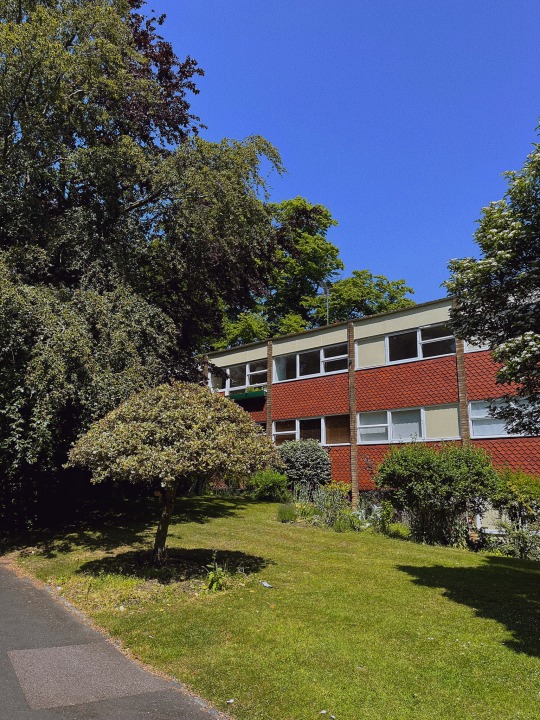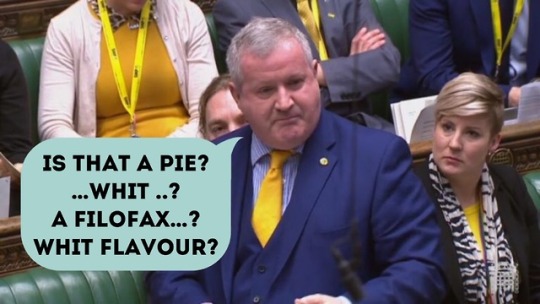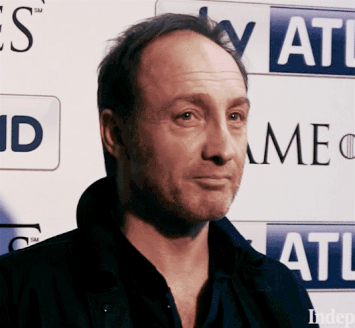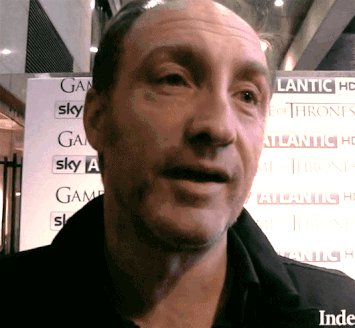#ian nairn
Text

Frame study: Nairn Across Britain - Trans-pennine Canal - Blackburn Shopping Centre ⛲️
Instagram // Twitter // Threads // VK // ArtStation // Mastodon
#artists on tumblr#illustration#architecture#architecture illustration#ian nairn#nairn across britain#blackburn#bdp#building design partnership#modern architecture#retail#modernist design#modernism#shopping centre#procreate#cyhsal
11 notes
·
View notes
Text
"The real problems of modern architecture are just beginning." #iannairn @NottingHillEds
I’ve featured author Ian Nairn here on the Ramblings in the past; a maverick architectural commentator who made numerous programmes for the BBC as well as writing his books, he slipped out of fashion for a while but now his works are coming back into print. I covered his book “Nairn’s London“, reissued by Penguin, for Shiny New Books in 2015; and in 2014 I wrote about his seminal “Nairn’s Towns“,…

View On WordPress
0 notes
Text
New edition of Nairn takes us on a journey back in time
JOHN GRIDROD reviews a favourite old book, reborn
Time travel: old book, lovely new edition
Fancy a spot of mid-century time travel?
Well, take a trip back to London in the early 1960s, and go exploring with Ian Nairn, in his recently reissued 1964 guidebook to modern buildings in the city (and beyond): Modern Buildings in London.
I love the emotionally charged writing of Ian Nairn. The great…

View On WordPress
#architecture#Croydon#Ian Nairn#John Grindrod#London Transport#Modern Buildings in London#Notting Hill Editions#Open House London#TfL#Transport for London
0 notes
Text
Cartoon Capers a-plenty at the Waterside Arts Festival in July
There's cartoon craziness ahead at the Waterfield Arts Festival in Hythe, Kent, next month, with workshops and more co-ordinated by the Cartoonists’ Club of Great Britain
The Waterside Arts Festival is back in Hythe, Kent, next month – and a number of cartoonists are taking part.
The Festival began back in 1994, inspired by the annual village festival in Mauves Sur Loire, the twin town of Hythe, and holds a special place in the hearts of local people. Now, a new generation of Waterside residents is bringing the festival back to life, with the support of Culture…

View On WordPress
#Achaz von Hardenberg#Arts Council#Cartoonists Club of Great Britain#Chris Williams#Creative People and Places#Culture in Common#Hythe#Ian Ellery#Music#Rich Nairn#Simon Chadwick#Sue Burleigh#Tim Harries#Waterside Arts Festival
3 notes
·
View notes
Text
"Stone of Destiny" set to cause a stir

Press and Journal: October 4, 2008
Some say it was the greatest robbery in Scotland's History, others that it bolstered calls for independence. Now cinema audiences have the opportunity to decide for themselves as Stone of Destiny opens next week.
The true story of Scotland’s most daring robbery hits cinema screens on October 10, when Charles Martin Smith’s latest feature, Stone of Destiny, is released.
The all-star cast includes Charlie Cox (Casanova, Stardust) and Kate Mara (Shooter, Brokeback Mountain) alongside Scottish screen legends Billy Boyd (The Lord of the Rings, Master and Commander) and Robert Carlyle (Trainspotting, The Full Monty) as well as Peter Mullan (My Name is Joe, Children of Men) and Academy Award winner Brenda Fricker (My Left Foot).
Written and directed by Charles Martin Smith, Stone of Destiny is based on the real-life story of Ian Hamilton, played by Charlie Cox, who led a group of four university students to steal back the legendary coronation stone of Scottish kings and queens and symbol of Scottish independence – the Stone of Scone.
Frustrated by political apathy and Scotland’s diminishing sense of nationhood, Hamilton sought to reawaken Scottish national pride and spur his generation into action.
For hundreds of years, the English had jealously guarded the Scottish coronation stone, the Stone of Destiny – an ancient block of sandstone symbolically used in coronation ceremonies which Edward I took from Perth in the 13th century.
Hamilton led a group of university friends to London to make a dramatic gesture to reinstate Scotland’s place on the political map. Despite having little money and even less experience, they hatched an ambitious plan to break into Westminster Abbey in the wee hours of Christmas morning and “liberate” the most powerful symbol of Scotland’s nationhood, the Stone of Scone – otherwise known as the Stone of Destiny.
Hamilton’s daring act was a moment of great Scottish pride.
Based on Ian Hamilton’s book, The Taking of The Stone of Destiny, the movie was filmed in Glasgow and London and, fittingly, had its world premiere at the Edinburgh International Film Festival in June this year.
Among those attending the premiere were Sir Sean Connery, Nairn-based Oscar-winning actress Tilda Swinton and the entire cast.
While Charlie Cox burst into public consciousness in 2007 with his lead role in Matthew Vaughn’s Stardust, the 25-year-old London-born actor was no beginner.
After making his big-screen debut in 2003 thriller Dot The I, he went on to work opposite Al Pacino in Michael Radford’s lush film version of The Merchant of Venice and Heath Ledger in another film set in the Italian city, 2005’s Casanova. Subsequently acting alongside Robert De Niro and Michelle Pfeiffer in Stardust, Cox evidently has no fear of challenging himself to the limits.
However, accepting the role of Hamilton threw up two challenges – perfecting a Scottish accent and coming up against Scottish acting giant Robert Carlyle, who plays Hamilton’s reluctant mentor, John MacCormick.
Speaking of Carlyle, Cox said: “He’s one of my favourite actors; in many ways, more so than some of the big guys because he’s more my generation.
“I’ve grown up watching his films and he’s a jobbing actor who does great role after great role.”
And mastering the accent?
“Absolutely terrified – and still am. There’s no real excuse for it, is there? It’s my job to get it right, and I’m not great with accents. I’m not one of those people that can turn it on. I had to really work hard with it. And I know that I’ll watch the film and hear sounds that are off and wrong, and I just hope that doesn’t take away from the performance, and I hope it’s not too obvious to others.”
Having spent months filming a story he initially knew nothing about, it’s interesting to hear his views on the completed film.
“I loved it. I thought it was incredibly charming,” said Cox. “I felt like I did when I read the script. I thought it was a wonderful story and told brilliantly. And I really feel like Charlie Martin Smith has translated that very well on to film.”
Playing a person who is still alive makes the role that wee bit harder, too.
“It’s a bit mad, isn’t it?” said Cox. “It’s a wee bit more pressure. I feel, with the other characters that I’ve played, anything extra that I bring to it is justifiable because it’s my own invention. Whereas that’s not the case here.
“You’re playing someone who does exist, who was documented, and although what I know of Ian is what he is today, and the bits of information I have from the 1950s and the rest of his life, I don’t have any video footage of him. So I had to make my own mind up, which is more freeing.
“But it’s a pressure. If I don’t do him justice, if I get him wrong, it’s not OK. His son was on the set, who, ironically, is a friend of mine. Ian (Hamilton) has seen it, but not on the big screen, and that makes a big difference.
“If you don’t know much about film, if you haven’t worked a lot with film, you can watch it on a small screen and think that you’ve seen it. But then it’s a different experience.”
Like Mel Gibson’s Braveheart, Stone of Destiny is tipped to stir Scottish blood.
“I read something in the paper the other day. The biggest boost of national pride in Scotland over the last 50 years was the release of Braveheart,” said Cox. “They had more rallies and letters when Braveheart was released than over anything else.”
Although he knew nothing of the story beforehand, having learned it, Cox feels it contributed to the movement for Scottish independence.
“Although it didn’t have a direct impact into the Scottish government, it was certainly a huge catalyst towards all of that,” said Cox. “Ironically, and a lot of this is by chance, filming it now is interesting because the nationalist party are in power. Not only was that not the case back then, it was far from it. It was not even feasible.”
~*~
#just me archiving another old interview 😊#charlie cox#ian hamilton#stone of destiny 2008#interview#article#baby charlie
14 notes
·
View notes
Text


20230604. 【🪴】
Adventures in Span-Land: Blackheath. Part 1/2. Part 2 here.


I went wandering around Blackheath to visit all the Span projects, and I have a lot of thoughts. (A couple were left out due to subpar navigational skills; they shall be revisited on another occasion.)


This was my first time seeing Span in the real world. Previously, I’d known about Lyons’s work at surface level and watched the 1969 documentary about Span, featuring Ian Nairn and Lyons himself (it’s an interesting film, especially to hear Lyons talk about his work, and is available on the BBC iPlayer). However, nothing beats a building visit, a belief once again proven right by this daytrip. Even now, I’m still savouring everything I saw, cherishing each moment on that sunny, breezy day meandering through lush green streets.


Seeing Span in action awakened something in me, perhaps a longing for a peaceful and happy existence somewhere far removed from everyday anxieties and worries. For the weary soul worn out by urban bustle, the secluded world of Span-Land is like a paradise. What Span sold was not just a space for living, but a lifestyle itself, naturally adopted the moment your life in a Span home began.


Clustered together, these dwellings formed less of a community and more of a commune – a benevolent cult of happiness and contentment built upon the suburban way of life perfected by Eric Lyons. These Modernist architectural gems are the physical manifestation of his crystalline ideologies, but they offered so much more. If I ever wished to join a cult, it would be this one.
[To be continued in part 2.]
☞ studygram
#studyblr#studyblr community#archiblr#architecture studyblr#architecture student#london#places#cottagecore#cottagecore aesthetic#suburbcore#naturecore#modern architecture#modernist architecture#writing#venetianwindow#heyzainab#heypeachblossom#astudentslifebuoy#problematicprocrastinator#starrystvdy#nihaohoney#studyvan#myhoneststudyblr
8 notes
·
View notes
Text
November 2023
Our November meeting started with a set of lively 4/4 marches and waltzes played by local trio, Calum MacAskill (accordion), Stevie Bremner (guitar) and Charlie Oag (drums). Next on stage and making his debut was 7 year old Kiro Brendon who treated us to Twinkle, Twinkle Little Star on his fiddle – definitely a star in the making! Keeping things in the family sister Leela Brendon gave us a fine fiddle selection before she was joined by Carina Campbell, making a most welcome return to the club, to provide a fiddle duet including a slow air, waltz and the jig Murdo MacKenzie of Torridon.
Our next accordionist of the night was Peter Donnghale on his 2 row button box and he was followed by Carina Campbell on fiddle with a selection including the tunes Portree Bay and Angus MacKinnon. It was time then to welcome a visitor to the Club, Ian Morrison from Wishaw, who played two sets of lovely waltzes on his accordion.
Welcome now our guests for the evening, the Robert Nairn Duo. Robert played his 3 row Button Box accompanied by Ewen Henderson on drums and they commenced with a great set of 2/4 marches followed by Pipe Jigs and Gaelic Waltzes before Robert picked up his melodeon, and Ewen the piano accordion, for some more lively tunes.
After the interval our MC, Julia took over on her fiddle to play a variety of tunes including the beautiful Hills of Lorne. Julia was followed by long time member, Wendy Riva, who gave her usual competent selection of tunes on the fiddle leading up to another selection from the Club band of Calum, Stevie and Charlie, complemented by Carina on fiddle, who provided us with a set of 2/4 marches including a fine composition by Calum for his wife, Irene.
It was then time for our guests Robert and Ewen to take the floor and what a selection they played in a total of 13 sets ranging from Irish Jigs through marches, boston two steps, schottisches, Gaelic waltzes and reels and brought the evening to a rousing climax with a set of jigs for an Orcadian Strip the Willow. The band were thanked and wished a safe journey home as they set off down the road.
Next month's guests will be the Graeme Mackay Trio.
0 notes
Video
youtube
‘This isn’t a beer festival.. a convulsion....I hope that.most of the people here are genuine Munichers, not just tourists coming to watch a spectacle, because they disgust me...this is for me just animal.’
The late, great architecture and travel writer Ian Nairn visited Munich Oktoberfest in 1972.
2 notes
·
View notes
Photo

KOBH #0056 — Quai de Jemmapes, Canal St-Martin, Paris
Liber librum aperit
Liber librum aperit — one book opens another. I don’t know how I stumbled over this book but I’m grateful. Ian Nairn wrote on architecture. Idiosyncratic and adept at the bon-mots.
Here Nairn writes on the Quai de Jemmapes:
Various and apt to change gear — down into the most chic squalor in the world, seeped in from Belleville, up into the world of the boulevards which are only a few yards away. This is an industrial canal which has been French-polished, the link between the Bassin de la Villette and the Seine; the dark poetry is lightened but not dispersed amongst the trees, the Sunday fishermen and the repeating high-arched footbridges.
Nairn’s Paris (1968, re-published in 2017)
Delicious prose.
© kindofbluehour.com | Instagram | Facebook
#Blue Hour Photography#canal st martin#original photography#Psychogeography#ian nairn#guardiancities#color photography#urban landscape#photographers on tumblr#body cap lens
1 note
·
View note
Text



Frame study: No Two the Same - Churchill Gardens 🐝💐
Instagram // Twitter // VK // ArtStation // Mastodon
#artists on tumblr#illustration#architecture#architecture illustration#digital illustration#powell & moya#powell and moya#ian nairn#no two the same#churchill gardens#london#modernism#modernist architecture#modern architecture#cottagecore#cottagecore aesthetic#cyhsal
9 notes
·
View notes
Text
Exploring the concept of the mid-life crisis... @NottingHillEds
Exploring the concept of the mid-life crisis… @NottingHillEds
If there’s one thing I find you can rely on it’s that Notting Hill Editions books are going to be an interesting read! I’ve had the pleasure of reading many of their releases over the years and whether it’s Virginia Woolf, Oscar Wilde, George Perec, Ian Nairn, A.A. Milne or A.J. Lees (to name just a few I’ve read), you’re guaranteed an interesting and stimulating read! Their latest release,…

View On WordPress
1 note
·
View note
Photo




Ian Blackpudding-Supper MP
Leader of the SNP in Westminster.
Arms Dealer, Pie Killer, Anger Management School Dropout, Consultant to Burke’s Peerage (Pop Up Edition), General Laughing Stock and National Source of Cringe...
Salt & Sauce Please...!
#Ian Blackford#SNP#Westminster#Inverness Nairn & Lochaber#Charles Kennedy#Scotland#PM Question Time#embarrasment
1 note
·
View note
Quote
There are better reasons for going here than to look at the grave of Karl Marx. This is the creepiest place in London; no Dickensian stretch of the river can match this calculated exercise in stucco horror, now itself decomposing. The entrance is well downhill in Swains Lane, and at first the landscape is ordinary. But as you wind up the hill it becomes more and more overgrown, choked in winter by dead fronds with an unnerving resemblance to spanish moss. The landscape looks less and less like London, more and more like Louisiana. Then, with a shock like a blood-curdling scream, the Egyptian entrance shows up. Beyond it, the Catacombs, a sunken rotunda lined with stucco-faced vaults, gently deliquescent, crumbling away. Inside them, coffins on ledges. A familiar name like Carl Rosa on one of the vaults seems to accentuate the terror. Nothing seems real but death at its greyest and clammiest. The cemetery closes well before dark, and a good job too.
Ian Nairn on ‘the creepiest place in London’ - Highgate Cemetery. In Nairn’s London, published 1966.
#london#highgate cemetery#cemetery#happy halloween#I'm glad ian nairn shares my love of highgate#because when he doesn't like a place he can be one sarcastic little shit
6 notes
·
View notes
Photo








From 2014 Game of Thrones Ireland Premiere
#roose bolton#michael mcelhatton#kristian nairn#liam cunningham#ian mcelhinney#hodor#davos seaworth#barristan selmy#game of thrones#got cast#gotedit#gotedit2#mymcethings#my edit
71 notes
·
View notes
Text
Week 2 - Colonialism Research

‘cottagecore moodboard’ by user raspberrymornings on tumblr
The Problem with Cottagecore
The ‘cottagecore aesthetic’ is described by Wikipedia as being an ‘internet fashion aesthetic’, as well as a Gen Z subculture, that celebrates an idealised rural life, simple living, and traditional skills and crafts such as baking, cooking, pottery and sewing. Its soft, sunny images of jam jars, lambs and white picket fences are peaceful and comforting - the prospect of swapping the rapid pace and grey smog of a capitalist hellscape for peaceful country living is an enticing one.
I definitely have an appreciation for this aesthetic - I’ve never felt closer to some kind of god than I do when I bake a cake from scratch, I coo over videos of farm animals on the internet, and I want nothing more than to roam about the idyllic, fantasy-like farm retreat built for the queen in Sophia Coppola’s 2006 film ‘Marie Antoinette’. I know that a large reason I chose Nairn Street Cottage as my site to focus was because of my affinity for the aesthetic - I knew it would mean I could easily incorporate my favourite mediums of collage and needlework, and that I’d enjoy researching it because of my passion for history.
However, I want to ensure that I am not blindly romanticising the home and lifestyle of the Wallis family settlers, and ignoring the darker political history at play.
A desire to lead a wholesome existence and be more in-tune with nature is not inherently bad - however an uncritical appreciation of the cottagecore aesthetic can lead to a romanticisation of settler colonialism - because the practice of establishing rural dwellings is largely connected to the legacy of homesteading and farming on stolen Indigenous land (Ollivain). This aesthetic that promotes a life of self-sufficiency in rejection of the city carries with it the colonial assumption that land is “up for grabs”, as well as the danger of encroaching on indigenous country when Traditional Owners are not consulted (Ollivain).
“Fighting for Indigenous liberation and being conscious of whose land we are on is something we should all strive to do and we must be open to criticism; lest we allow our escapist fantasies divert us from the important work of transforming reality” (Ollivain).
Colonialism in New Zealand
- Māori originated with settlers from eastern Polynesia, who arrived in New Zealand in several waves of waka voyages between roughly 1320 and 1350. By the time the first Europeans arrived, Māori had settled the land, every corner of which came within the interest and influence of a tribal (iwi) or sub-tribal (hapū) grouping (A History).
- After Abel Tasman became the first European explorer to reach New Zealand, it would be another 127 years before the next recorded encounter between European and Māori - British explorers arrived first, with French not far behind (A History).
- Over the next 60 years contact grew, with majority of interactions between Māori and Europeans passing without incident - but when things did turn violent, much was made about the killings of Europeans, with little mention about the considerable loss of Māori life that did occur (A History).
- Whalers and sealers made regular visits to the colony, and by the 1830′s the British government had decided to “curb the lawlessness” of the land and establish a colony (Alves). In 1840, the Treaty of Waitangi was signed by more than five hundred chiefs. The Treaty is a highly contentious document that still carries a lot of weight in present-day politics - briefly, both the English and Maori versions stipulated different things: the former mandated that the Crown would have full control over New Zealand’s territories, while the latter indicated that Maori would have full sovereignty over their tribal lands (Alves). These deviations led to a series of conflicts and forceful land grabs by the British (Alves).
- The Wallis family arrived in New Zealand in 1857. Seventeen years earlier, in 1840, was when the first settler ship - the Aurora - arrived in Petone (European). The town was named for the Duke of Wellington, winner of the 1815 battle of Waterloo, and was part of the New Zealand Company’s systematic model of colonisation (European). By the end of the year, 1200 settlers had arrived in Wellington (European).
- In 1859, Governor Thomas Gore Brown’s purchased a disputed block of land at Waitara, which set the government on a collision course with the Kīngitanga movement. The government interpreted the Kīngitanga response as a challenge to the Crown's authority - Governor Gore Browne succeeded in bringing 3500 Imperial troops from the Australian colonies to quash this perceived challenge, and within four years a total of 9,000 British troops had arrived in New Zealand, assisted by more than 4,000 colonial and kūpapa (pro-government Māori) fighters as the government sought a decisive victory over the "rebel" Māori. The use of a punitive land confiscation policy from 1865, depriving "rebel" Māori of the means of living, fuelled further Māori anger and resentment, fanning the flames of conflict in Taranaki (1863–1866) and on the east coast (1865–1866).
- In the period between the first European landings and the First World War, New Zealand was transformed from an exclusively Māori world into one in which Pākehā dominated numerically, politically, socially and economically (A History).
Effects of Colonisation on Māori
- A major decline in life expectancy - from about 30 years before European contact to 25 for men and 23 for women in 1891 (Pool).
- A major population decline - from around 100,000 in 1769 to 42,000 at its lowest point in 1896 (Pool).
- Impact of introduced diseases - this was the major reason for the population decrease, and had devastating results. The decline began accelerating after the signing of the Treaty of Waitangi in 1840, as settlers began arriving in greater numbers (Pool).
- A loss of land - The influx of settlers led to a demand for land, and from the 1840s Māori were under great pressure to sell their ancestral territories (Pool). Loss of Māori land – through confiscation following the 1860s wars, Crown purchase and the Native Land Court – led to the displacement of large numbers of Māori (Pool). Deprived of their land, tribes were in many instances reduced to poverty, with no option but to live in overcrowded and unhygienic conditions (Pool). Losing land, they also lost access to traditional food sources (Pool). Lack of resources, overcrowding and poor diet helped disease to take hold and spread (Pool).
Nairn Street Land
- The land around Pukeahu was occupied by ngakinga (gardens) for the Te Akatarewa pā. This was a major pā for the Ngāi Tara iwi, so they developed numerous garden sites, including on Pukeahu. Ngā Kumikumi clearing was an old cultivation area in the bush around what is now lower Nairn Street. Nearby, around Central Park, was the Te Āti Awa kāinga (village) known as Moe-i-te-rā or Moe-rā (Pukeahu).
- There are few, if any, known wāhi tapu (places of spiritual significance to Māori) directly on Pukeahu. However, because of its height and proximity to Te Akatarewa pā, it is likely that burials were conducted somewhere on the site (Pukeahu).
- Te Aro pā was established around the 1820s, and covered about 2 hectares in the 1840s. It was divided in two, with Ngāti Ruanui people living in the eastern end and Taranaki people at the western end. As Wellington grew, British colonists called for the pā to be sold. The residents resisted, but the settlers forced the issue and by 1870 it had been subdivided and sold. In 2005, archaeologists uncovered the remains of three huts ( Norman).
- On a map of the courses of Wellington streams from 1940 - 1949, an un-named stream is marked running from the vicinity of Nairn Street via Cuba Street to Te Aro (Wellington Streams). The Te Aro Pa site at the mouth of this stream is marked (Wellington Streams).
I can’t seem to find any information online regarding the stream that would have run across the Nairn Street Cottage section - I will look into this further, as I’d like to know its name if I could, and its significance if it had any. In the Māori at Pukeahu article, it mentions a swamp in the vicinity, which was a mahinga kai (food-gathering area), where eels and other fish from the swamp streams were gathered - it could well have been one of those streams. In Māori culture, many tribes directly or indirectly consider water as the source or foundation of all life - in this case, the stream would have been important for sustaining life and providing nourishment.
Bibliography:
Alves, Thalita. “The Story of Colonisation in New Zealand.” Culture Trip, 28 June 2018, theculturetrip.com/pacific/new-zealand/articles/the-story-of-colonisation-in-new-zealand/.
“A History of New Zealand 1769-1914.” NZ History, nzhistory.govt.nz/culture/history-of-new-zealand-1769-1914.
“Courses of the Wellington Streams.” National Library , natlib.govt.nz/records/22612149.
“European Settlers Arrive in Wellington.” NZ History, nzhistory.govt.nz/wellington-anniversary-day.
“Māori at Pukeahu.” Māori at Pukeahu, mch.govt.nz/pukeahu/park/pukeahu-history-4.
Norman, Edmund. “Te Aro Pā.” Te Ara , Ministry for Culture and Heritage Te Manatu Taonga, 20 Oct. 2015, teara.govt.nz/en/artwork/13194/te-aro-pa.
Ollivain, Claire. “Cottagecore, Colonialism and the Far-Right.” Honi Soit, 8 Sept. 2020, honisoit.com/2020/09/cottagecore-colonialism-and-the-far-right/.
Pool, Ian. “Effects of Colonisation on Māori.” Te Ara Encyclopedia , Ministry for Culture and Heritage Te Manatu Taonga, 2 Feb. 2018, teara.govt.nz/en/death-rates-and-life-expectancy/page-4.
14 notes
·
View notes
